On this page
Grampian regionThis page lists books about birds and birdwatching in the Grampian region of Scotland, The region comprises the current council areas of Moray and Aberdeenshire and the old counties of Morayshire, Banffshire, Aberdeenshire and Kincardineshire. The area incorporates much of the Cairngorm and Grampian mountains.The books are arranged by publication date with the most recent at the top of the page.
Scotland
For bird books that cover all of Scotland see:
Scotland
For books that cover regions of Scotland see:
Argyll
Ayrshire
Borders
Central Valley
Dumfries & Galloway
Fair Isle
Fife
Grampian
Highland
Inner Hebrides
Orkney
Outer Hebrides
Shetland
|
|
|
|
Birding Guide to North-East Scotland: Including Part of the Cairngorms National ParkMark Sullivan and Ian Francis
Aberdeen and District RSPB Group
2015
"This excellent guide will take you through the well and lesser known gems to be found in the North-East of Scotland. Along with maps of the areas and target species to be found, this would be an excellent addition to anyone's collection."
|
Buy from amazon.co.uk 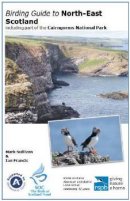
|
|
Birds in Mid Deeside 1970-2012David Jenkins/h3>
TLA Publications
2015
An 80 page guide to birds recorded in Mid-Deeside, North east Scotland between 1970 and 2012. Includes location information, description, illustrations and maps.
|
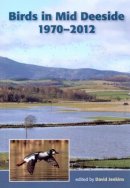 |
|
Birds in North-east Scotland Then and NowAdam Watson and Ian Francis
Paragon Publishing
2012
"Field observations mainly in the 1940s and comparison with recent records. Adam Watson as a schoolboy made field observations on birds in north-east Scotland during the 1940s and early 1950s. These are of special interest because hardly any local ornithologists lived there, and his main set of observations is published here for the first time. As well as accounts for all species seen, there is detailed information on several species whose status has changed greatly since: declines of breeding greenshanks and ring ouzels, and rapid increases in the proportions of feral doves and carrion crows. These and other observations form a useful baseline for comparison with what is now being seen and recorded by hundreds of ornithologists living in and visiting the area. Ian Francis came to north-east Scotland in the early 1990s and has taken part in many aspects of local ornithology. He was first editor of a major book: The Breeding Birds of North-East Scotland, published in 2011, which documents the current breeding distributions of birds and assesses changes over 40 years, allowing a modern perspective on Adam Watson's observations from the mid-1900s. The current book by Adam Watson and Ian Francis, Birds in north-east Scotland then and now, also includes a previously unpublished account of long-term research by Adam Watson, Rik Smith and Mick Marquiss on summering snow buntings, one of the UK's rarest regularly breeding birds."
|
Buy from amazon.co.uk 
|
|
The Breeding Birds of North-East ScotlandEditor: Ian Francis and Martin Cook
Scottish Ornithologists' Club
2011
"This new breeding bird atlas presents the results of five years of survey work in Moray, Aberdeenshire and Aberdeen City and includes almost half of the Cairngorms National Park. It maps the distributions of all breeding birds during 2002-06, and as the first repeated local breeding bird atlas for any area in Scotland, makes comparisons with earlier atlases, both local (1981-84) and national (1968-72 and 1988-91). Where possible, information on breeding birds has been updated to 2009. The maps use the familiar 2x2km 'tetrad' and the 2,340 surveyed make this the largest of its kind ever undertaken, covering almost 4% of the UK land area and 11% of Scotland. Species accounts have been written by sixty local authors, and many photographers from North-East Scotland contributed a wide range of images illustrating breeding activity, a distinctive feature of this atlas. For each species, its habitat, breeding biology, local breeding status and distribution are summarised. An estimate of breeding population is provided, along with evidence for changes in distribution and numbers. The geography and habitat context in which our breeding birds are found is described in some detail, as are the main influences on their distribution and trends in numbers – issues that are critical to bird conservation. The atlas, with a foreword by Adam Watson, is 528 pages in length and full colour throughout."
|
Buy from amazon.co.uk 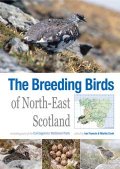
|
|
The Nature of the Cairngorms: Diversity in a Changing EnvironmentEditor: Philip Shaw and D.B.A. Thompson
Stationery Office Books
2006
"The Cairngorms are arguably the most significant area for nature conservatism in the British Isles. In The Nature Of The Cairngorms: Diversity in a changing environment over 30 authors have drawn from a wealth of published and unpublished sources to present an up-to-date review of the significance of the area's natural features, focussing mainly on those features they consider to be nationally or internationally important. The review falls into three parts, the first of which describes important elements in the Cairngorms, notably its geology, landforms, landscapes, habitats and main species groups. Each character describes recent research findings, trends and conservation issues for the landform, habitat or species group in question, and identifies areas particularly rich in these features. The second part assesses the nature of change, assessing the scale and consequences of climate change, deer management and recreation. Part three identifies habitats and areas rich in species for which the Cairngorms are nationally important."
|
Buy from amazon.co.uk 
|
|
Wild Land: Images of Nature from the CairngormsMark Hamblin and Peter Cairns
Mercat Press
2005
"The diverse habitats in the Cairngorms, Britain's largest National Park, are home to an unrivalled variety of wildlife, including the Golden Eagle, Osprey, Pine Marten, Red Deer, Red Fox and Mountain Hare. The mountain zone of the Cairngorms is the highest and most massive range of arctic mountain landscape anywhere in the British Isles, and the forests contain remnants of the original 'Great Wood of Caledon'. Over several years, wildlife and landscape photographers Peter Cairns and Mark Hamblin have captured the spirit of this special part of the world in a series of evocative images. Although led by stunning wildlife scenes and images of forest, mountain and moorland, this beautiful large-format book not only describes the history and management of each species, but also takes a look back at the animals of Scotland's past and glances into the future of Scottish wildlife, making a plea for the importance of nurturing our precious land."
|
Buy from amazon.co.uk 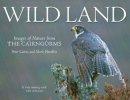
|
|
Rare and Scarce Birds in North-east ScotlandIan Phillips
1997
Documents occurrences of 159 species.
|
Buy from amazon.co.uk 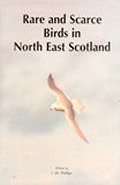
|
|
The Birds of Moray and NairnMartin Cook
Mercat Press
1992
"The Birds of Moray and Nairn provides an up-to-date account of the occurence and distribution of each of the 267 species recorded in the area, with maps, histograms, illustrations, historical information, and details of the main bird habitats."
|
Buy from amazon.co.uk 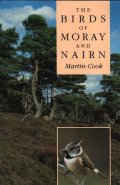
|
|
The Birds of North-East ScotlandS.T. Buckland, M.V. Bell and N. Picozzi
North-East Scotland Bird Club
1990
"This book forms the most comprehensive study published on the birds of north-east Scotland (Aberdeenshire, Kincardinshire and part of Banffshire).The region is one of the most varied and exciting in Britain. Habitats range from the high, wild plateaux of the Cairngorm mountains with such arctic breeders as Ptarmigan, Dotterel and Snow Bunting, through remnants of the ancient Caledonian pine forest, home of Britain's only endemic species, the Scottish Crossbill, through moorland, farmland, rivers and lochs, to the coastal cliffs and sand dunes. A survey of the birds was therefore a particular challenge. Presented here are maps and data from the first year-round atlas of bird numbers and distribution to be attempted in Britain. The survey period ran from January 1981 to December 1984, and involved 290 contributors. In addition, all bird records received between 1975 and 1988 have been analysed and are summarised in the species accounts. Illustrated by Scottish artists under the editorship of Keith Brockie."
|
Buy from amazon.co.uk 
|
|
In Search of Birds in the Scottish HighlandsBrian O'Shea and John Green
Artery Publication
1990
"The Scottish Highlands are not only an area of breathtaking beauty, but are also a wonderful habitat for some of Britain's most arre and interesting birds. This book takes you on a tour of these Highlands, introducing and showing you the birds you may come across on a holiday or journey through these ancient hills. It is not an identification guide but offers tips and advice as to where many of these birds may be encountered. Bird watching is one of the best ways to explore and enjoy the Highlands and we hope the book will help you to do this."
|
Buy from amazon.co.uk 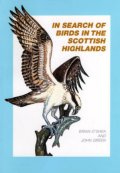
|
|
Charles St. John's Note Books 1846-1856: Invererne, Nairn, ElginCharles St. John
Editor: Admiral H.C. St John
David Douglas
1901
Editor's preface: "On my return from the East, I found amongst other notes and rough sketches of my father's his daily journal, which he kept with accuracy when living at Invererne (near Torres). Submitting it to my friend Mr David Douglas, the compiler and editor of 'Natural History and Sport in Moray,' published in 1863, and reissued with additions in 1882, now entirely out of print, he thought that although most of the facts had been recorded in that volume, yet the daily record of the author's observations at Invererne was so fresh that he ventured to think they would be interesting to all lovers of Natural History. I have introduced some of the rough sketches made for the amusement and instruction of his children. These are taken at random from his sketch books. On the fly leaves of the volume will be found those for our amusement. The 'Memoir' by Cosmo Innes and 'Life at Kosehall,' which both appear in 'Natural History and Sport in Moray,' are added; also a few remarks of my own on visiting the locality in 1900."
|
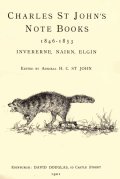
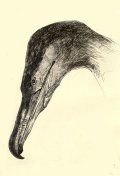
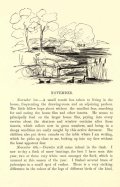 |
|
A Vertebrate Fauna of the Moray BasinJ.A. Harvie-Brown and Thomas E. Buckley
David Douglas
1895
Published in 2 volumes. The 'Birds' section is the first 228 pages of volume 2.
From the preface: "At the outset we desire it to be understood, that whilst undertaking this extensive area, and attempting to treat of its Fauna as a whole, we must crave indulgence for our many omissions and shortcomings, especially from those whose local knowledge must be very greatly in excess of our own. We wish also to take this early opportunity of gratefully acknowledging the frank, kind, and encouraging assistance we have received for many years back from that veteran naturalist, Dr. George Gordon, as well as of many others who have given us every facility and aid, whose names appear for the most part in the text, during the sequence of the Faunal Lists, or receive mention in our Introductory Chapters. As regards materials for a Chronological Vertebrate Fauna of Moray - at least that part of it south of the Great Glen - we have very continuous records for nearly a century, and perhaps no other area of Scotland, except Forth, can boast of such unbroken attention. We do not in our chronology go much further back than the old Statistical Account of Scotland. We pass on through the years of very general literary activity which succeeded, and in which the names of many Moray naturalists held prominent place - an activity not confined to the Moray Basin alone, but which was even more pronounced in Edinburgh, and some other parts of Scotland: we refer to a period which had its climax about the years 1828 to 1836. This was followed by the issue of the New Statistical Account of Scotland, and by the continuous records supplied by numerous local observers, and naturalists also from a distance, bringing our materials down to date of about 1850 to 1857. Scattered in footnotes through- out our volumes our readers will find most of the names, where they occur for the first time, of those who have assisted in building up a structure which we believe will compare favourably with that of any other Scottish area in interest, however far short our endeavours may come of doing it justice, and though it be far from ready for the copestones."
|
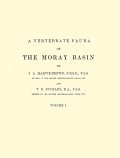

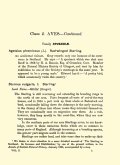 |
|